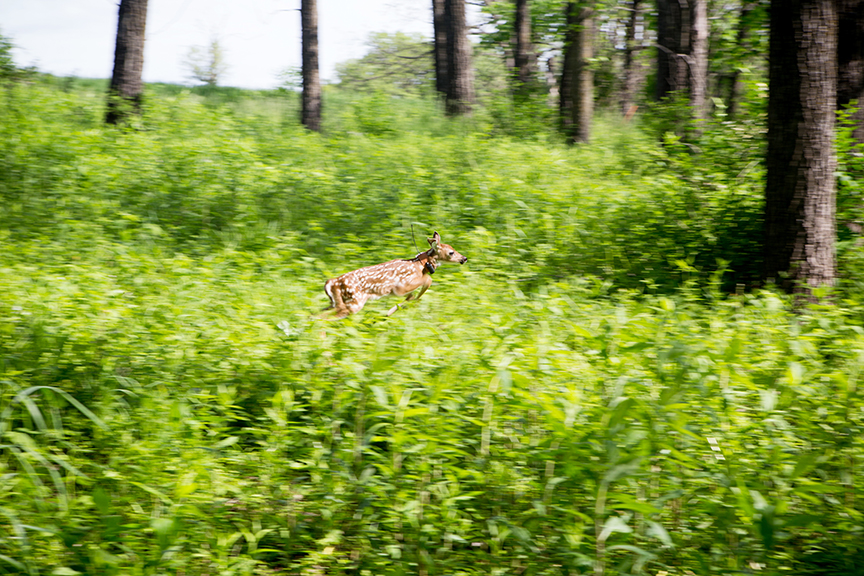Movement

Predicting the spread of wildlife disease is critical for identifying populations at risk, targeting surveillance and designing proactive management programs. Management programs to control CWD require improved knowledge of deer interaction, movement, and population connectivity that could influence disease transmission and spread.
Highly mobile species such as white-tailed deer are notoriously difficult to track at meaningful population and landscape scales. Direct observations of social behavior are often impossible. GPS collars have been deployed for a south-central Wisconsin deer study to address questions about animal social structure, movement across the landscape, and predator-prey interactions.
We can determine whether host dispersal can be used to predict spatial patterns of disease spread based on their connection among infected sub-populations and to target disease surveillance, control and preventative activities. One hypothesis is that yearling white-tailed deer exploratory and realized dispersal movements away from natal range are driving geographic spread of CWD. Another hypothesis is that the high prevalence of adult male white-tailed deer is attributable to increased home range sizes and increased contacts during the autumn breeding period. We plan to potentially determine the relative importance of these processes using the GPS location data coupled with camera trap data.
